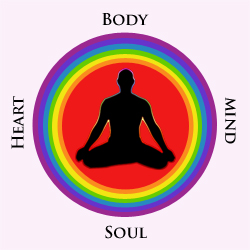
Who is a holistic medical doctor MD?
A whole new breed of MD’s have sprung up in the west and they are trained doctors in orthodox medicine and with good skills in at least one type of Alternative medicine, which may be acupuncture, herbal medicine, homeopathy or Ayurveda. These doctors help patients who wish to benefit from the aggressive technological advances of orthodox medicine with the gentle healing of the Complementary system.
The key philosophy of holistic medicine:
The
fundamental premise of holistic medicine is that no one health care medical
speciality has answers to the health syndromes of the 21st
century. Holistic medicine gladly
embraces all the wisdom of age-old cultures, healing systems from the orient
and also does not hesitate to use drastic measures of allopathic when deemed
necessary.
Pre-therapy
work up:
The Holistic MD will at first function like any other orthodox specialist. He will take a detailed history and do a
clinical examination, such as pulse, BP and a complete physical
examination. Then he will perform the
diagnostic blood tests that any MD normally does. The initial work up may last more than an
hour and this helps both the physician and the patient to understand each other
and develop trust for one another.
When
a patient chooses a Holistic physician, he or she has the option of trying
natural complementary therapies in tandem with the allopathic treatment and
this helps in elimination of the toxins in the patient and leads him to a
complete and comprehensive holistic cure.
Patients with intractable health issues often search for a
physician because they believe in the power of the body to heal itself, but
they also recognise the need a physician who can prescribe drugs if needed.
Other patients seek holistic cures because they have exhausted
all the options of conventional medicine.
A holistic physician will be able to factor past therapies and then
initiate a new health regimen to help patients improve their health through
orthodox and alternative means.
A holistic physician may be useful any of
these health problems:
- Unexplained depressive disorders
- Ischaemic heart disease
- Certain forms of tumours
- HIV or AIDS (a palliative measure to increase the life span)
- In high blood pressure
- Infertility
- Menopausal symptoms
- Chronic prostate problems
- In Type 2 diabetes mellitus.
Conclusion:
The holistic MD has to be devoted to treating the whole person: body, mind and spirit. Treatments are always done in the best interest of the patient. The doctor allows the patient to share in decision-making regarding treatment. Their job is to educate patients and help empower them to take responsibility for their care. The doctor acts responsibly in delivering both medical and alternative treatments. The Holistic doctor should not make outrageous claims or promise a “cure.”



